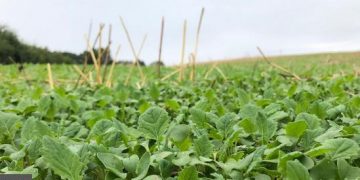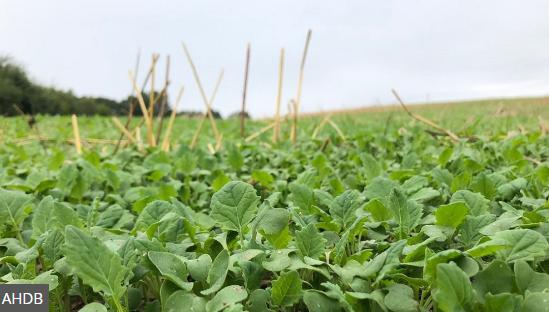A trap crop is simply more attractive to a target pest than the crop you are trying to protect.
For example, there is good evidence that turnip rape can reduce CSFB larvae in winter oilseed rape if it is grown close to it (such as in a border). Of course, this requires more work at a busy time and takes up precious land.
There is an option that requires much less management, with no requirement to purchase/sow additional seed or tie up land. You simply need to hold off controlling volunteer oilseed rape.
As cabbage stem flea beetles look to alight on a juicy crop, they sense and home in on plant volatiles called isothiocyanates (glucosinolate breakdown products). If your field is densely populated with volunteer oilseed rape it will give off a relatively big cloud of these volatiles (compared to recently drilled oilseed rape in a nearby field). It acts as a beetle magnet during migration.
If the trap crop is left for several weeks, it capitalises on a further quirk of CSFB biology. Beetles gradually lose their wing muscles, severely limiting their escape options when the volunteers are eventually destroyed.
A lack of effective chemical options has made this beetle pest enemy number one in winter oilseed rape. Its management relies on layering a developing, variable and complex set of alternative solutions.
This is the second in a series of CSFB IPM articles, which aims to provide you with a solid foundation for experimentation at the farm level to help you grow oilseed rape with more confidence.
As with all cultural approaches, control can vary.
Reference: https://ahdb.org.uk/































